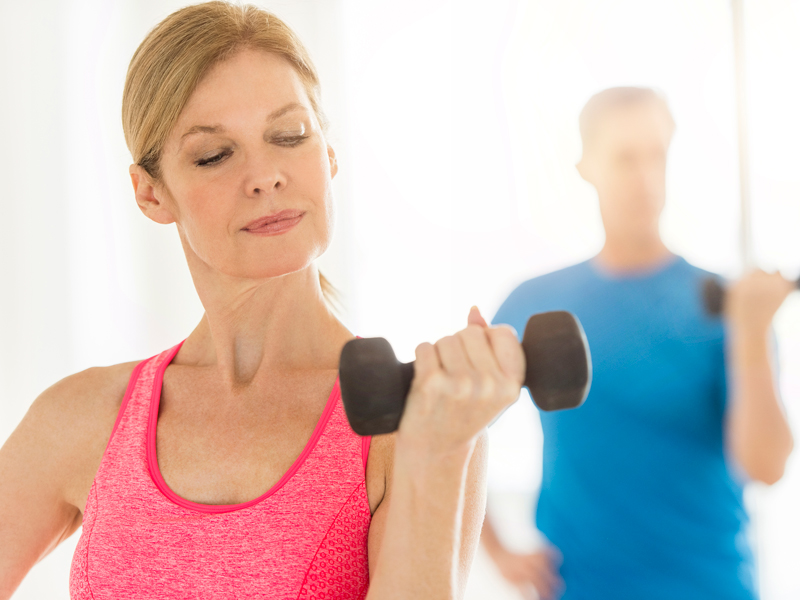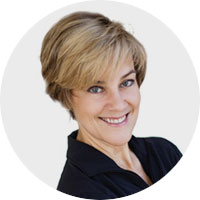Get Easy Health Digest™ in your inbox and don’t miss a thing when you subscribe today. Plus, get the free bonus report, Mother Nature’s Tips, Tricks and Remedies for Cholesterol, Blood Pressure & Blood Sugar as my way of saying welcome to the community!
Is it best to burn calories or build muscle after 50?

Yes.
You need both cardiovascular activity and resistance training. But which, if either, is more important when you turn the corner at 50?
I’m often asked this question as a wellness coach who has also been a personal trainer to midlife women for over three decades.
If you take a single half hour exercise session and compare the energy expenditure, that is, calorie burning potential of resistance training to cardiovascular activity, hands down the winner is cardiovascular exercise. Running, elliptical exercise, or bicycling are going to burn more calories per that half hour than pushing weights around.
That doesn’t tell the full story however. Both the increase in metabolism that adding or preserving lean muscle tissue provides, and the “after burn” of an exercise session, contribute a great deal to total energy expenditure.
The intensity level at which you’re able to exercise directly impacts the amount of after burn you will experience. Exercise physiologists refer to this as Excess Post Oxygen Consumption or EPOC. It’s obvious that as you breath harder and faster during exercise you consume more oxygen during exercise than at rest. That’s how you increase your caloric burn. Because the body takes time to recover after exercise it still consumes a higher level of oxygen for a period of time following exercise as it repairs and recovers. That is the EPOC.
The higher your intensity of exercise the greater the EPOC. Instead of comparing just cardiovascular exercise and resistance training, however, you want to look at the difference between steady cardiovascular exercise and intermittent cardiovascular exercise.
If you walk at a low level for 30 minutes a day for instance vs. doing a minute of high intensity hill walking alternated with a minute of recovery, there will be a vast difference both in the energy expended during exercise and after. The interval training energy expenditure will far exceed the slow steady state level.
Resistance training EPOC amounts vary by intensity too. If you lift a light weight many times and reach fatigue you will experience results in muscle strength and tone. If you lift heavy weights such that your intensity level is higher or you “super set” (a random sequence of 8-10 exercises in a circuit repeated for multiple sets) to increase energy expenditure by up to 33%, both your energy expended during and after will increase.
The bottom line is the main factor in determining your EPOC benefit from exercise is your intensity during exercise.
Due to an increase in catabolic (breakdown) activity of muscle as you age, resistance training should become an increasing priority. Losing 3-8% total muscle mass each decade after you peaked at 25 will result in a reduction of your metabolism. Fat is not metabolically active. So to burn more calories while at rest, and to stay strong to enjoy life, you want more lean muscle.
EPOC can be far greater with resistance training than interval training especially if you’re limited in ability to do high intensity intervals by a condition or joint issues. You may be able to safely lift heavy weight, however.
The simple answer is you need both. Intensity during each of these components of a complete fitness program ultimately will determine how well they boost your overall fitness level.












